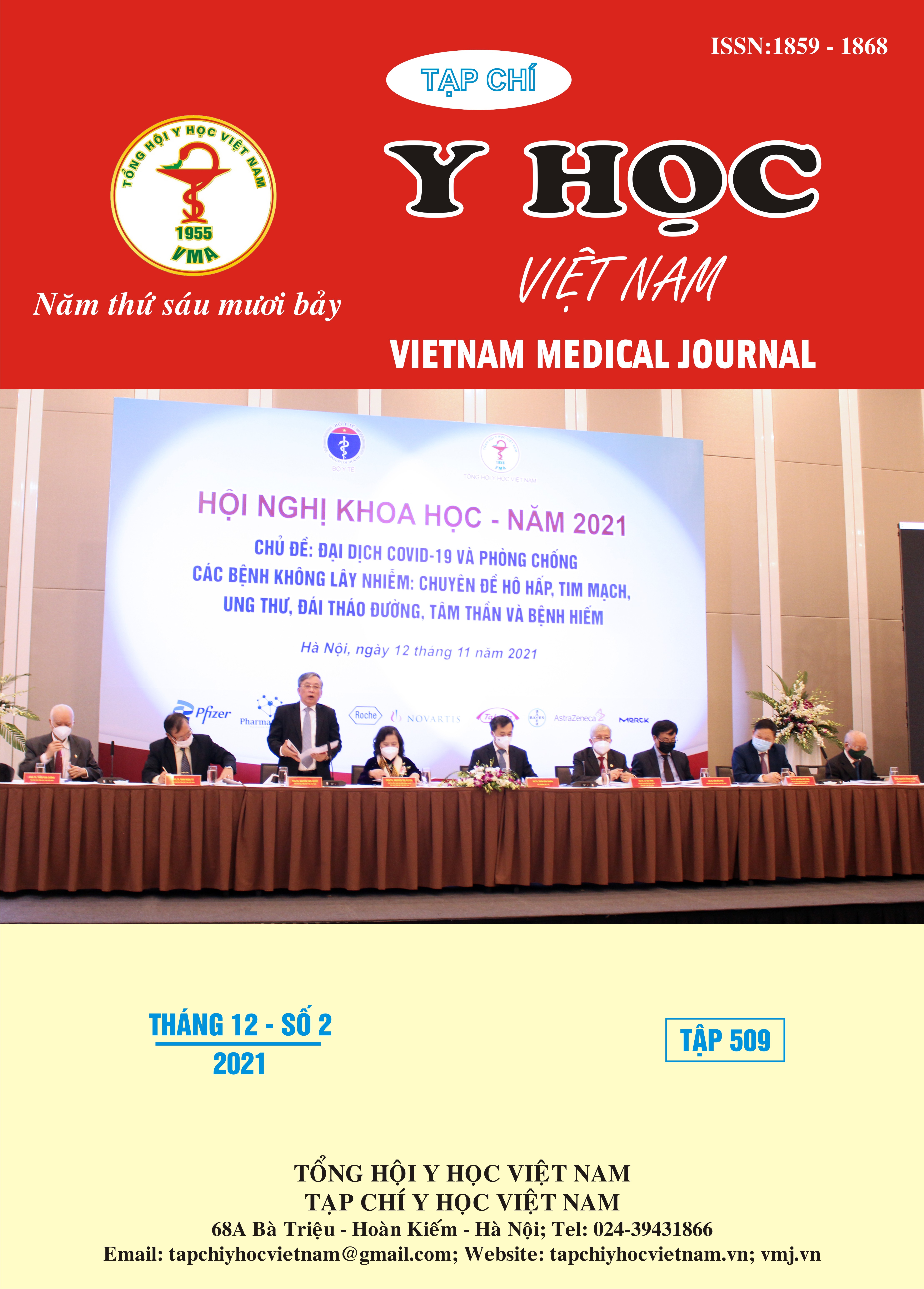ASSESSMENT OF RAPID SEQUENCE INTUBATION (RSI) IN EMERGENCY PATIENTS
Main Article Content
Abstract
Objective: Compare between rapid sequence intubation and intubation without using neuromuscular blocking drugs. Method: Descriptive study on 63 patients in Emergency Center, Bach Mai Hospital, who received tracheal intubation in two methods rapid sequence intubation and intubation without using neuromuscular blocking drugs. Results: The most popular diseases were digestive (33%) and respiratory diseases (31%). Intubations with RSI had a higher success rate on the first attempt compared to those with non-RSI (88 vs 67%,p < 0,05). It took less time to perform intubation with RSI compared to those with non–RSI (76s vs 163s, p<0,05). Hypotension rate in non–RSI group was higher than that in RSI group (p<0,05). Other complications such as mouth, throat trauma, esophageal intubation, main stem bronchial intubation, regurgitation, vomiting, cuff failure and hypoxemia in procedure did not have statistically significant difference between two group RSI and non – RSI (p>0,05). Conclusion: Rapid sequence intubation method with ketamine and rocuronium in emergency patients, who do not have difficult airway, associated with shorter time to perform endotracheal intubation, higher success rate on the first attempt but not with the risk of complications compare with intubation without neuromuscular blocking drugs.
Article Details
Keywords
rapid sequence intubation, sedative, neuromuscular blocking drug
References
2. Reed MJ. Can an airway assessment score predict difficulty at intubation in the emergency department? Emergency Medicine Journal. 2005;22(2):99-102.
3. Yamanaka S, Goldman RD, Goto T, Hayashi H. Multiple intubation attempts in the emergency department and in-hospital mortality: A retrospective observational study. Am J Emerg Med. 2020;38(4):768-773.
4. On behalf of the Japanese Emergency Medicine Network Investigators, Okubo M, Gibo K, Hagiwara Y, Nakayama Y, Hasegawa K. The effectiveness of rapid sequence intubation (RSI) versus non-RSI in emergency department: an analysis of multicenter prospective observational study. Int J Emerg Med. 2017;10(1):1.
5. Kerslake D, Oglesby AJ, Di Rollo N, James E, McKeown DW, Ray DC. Tracheal intubation in an urban emergency department in Scotland: A prospective, observational study of 3738 intubations. Resuscitation. 2015;89:20-24.
6. Driver BE, Prekker ME, Reardon RF, et al. Success and Complications of the Ketamine-Only Intubation Method in the Emergency Department. The Journal of Emergency Medicine. 2021;60(3):265-272.


